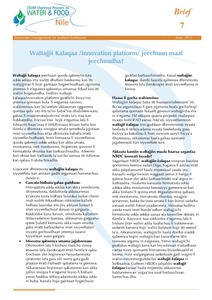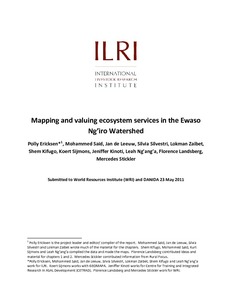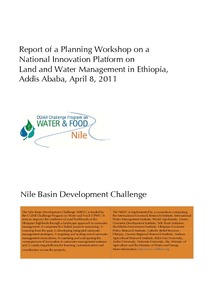Location
Vision, mission and strategy
ILRI's strategy 2013-2022 was approved in December 2012. It emerged from a wide processof consultation and engagement.
ILRI envisions... a world where all people have access to enough food and livelihood options to fulfil their potential.
ILRI’s mission is... to improve food and nutritional security and to reduce poverty in developing countries through research for efficient, safe and sustainable use of livestock—ensuring better lives through livestock.
ILRI’s three strategic objectives are:
- with partners, to develop, test, adapt and promote science-based practices that—being sustainable and scalable—achieve better lives through livestock.
- with partners,to provide compelling scientific evidence in ways that persuade decision-makers—from farms to boardrooms and parliaments—that smarter policies and bigger livestock investments can deliver significant socio-economic, health and environmental dividends to both poor nations and households.
- with partners,to increase capacity among ILRI’s key stakeholders to make better use of livestock science and investments for better lives through livestock.
This is ILRI’s second ten-year strategy. It incorporates a number of changes, many based on learning from the previous strategy (2000–2010, initially produced in 2000 and modified in 2002), an interim strategy (2011–2012) and an assessment of the external and internal environments in which the institute operates.
Members:
Resources
Displaying 611 - 615 of 1152What is a local innovation platform?
Changement climatique et famine: les «points chauds» sont identifiés
Une équipe de scientifiques de l’International Livestock Research Institute (ILRI) a identifié toutes les zones à haut risque du monde dans lesquelles la famine et les conséquences négatives du changement climatique s’exacerberont particulièrement violemment. Ces régions sont principalement situées en Afrique et en Asie du Sud, mais la Chine et l’Amérique latine pourraient également être concernées. Dans moins de 40 ans, la saison agricole de ces régions sera plus courte, plus chaude et plus sèche, mettant en danger des centaines de millions de personnes déjà très démunies.
Un pas de plus dans la lutte contre la trypanosomiase
Une équipe internationale de chercheurs a identifié deux gènes qui ont un rapport avec les résistances contre la trypanosomiase. La maladie est provoquée par des parasites unicellulaires du groupe des trypanosomes, qui sont transmis par la mouche tsé-tsé, et elle occasionne des dommages estimés à 4–5 milliards de dollars US par an. Ce sont particulièrement les éleveurs de bovins vivant dans ce qui est appelé la «ceinture tsé-tsé» de l’Afrique, qui va du Sénégal à la Tanzanie et du Tchad au Zimbabwe, qui sont particulièrement touchés.





